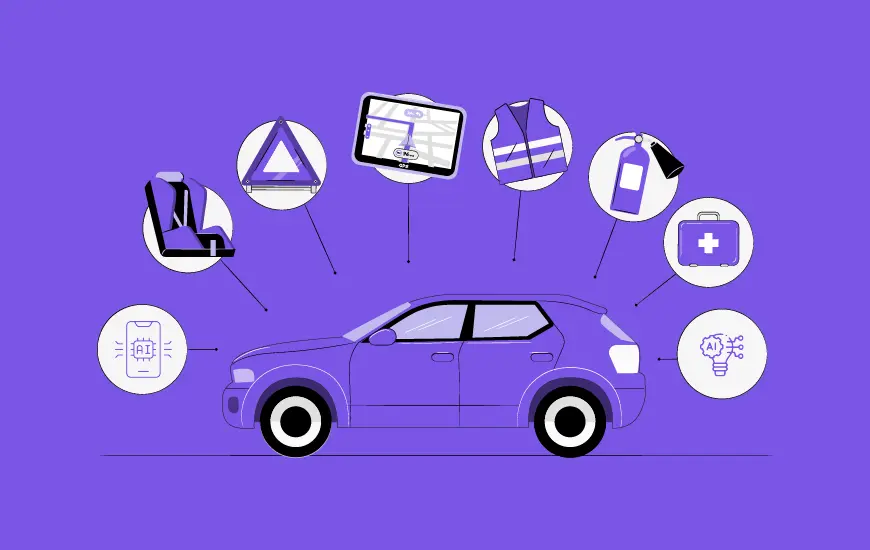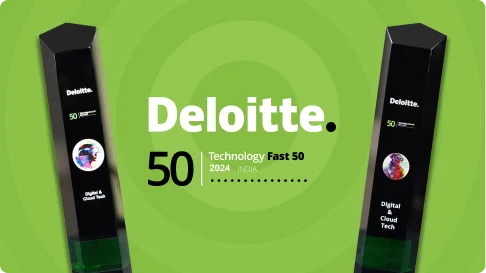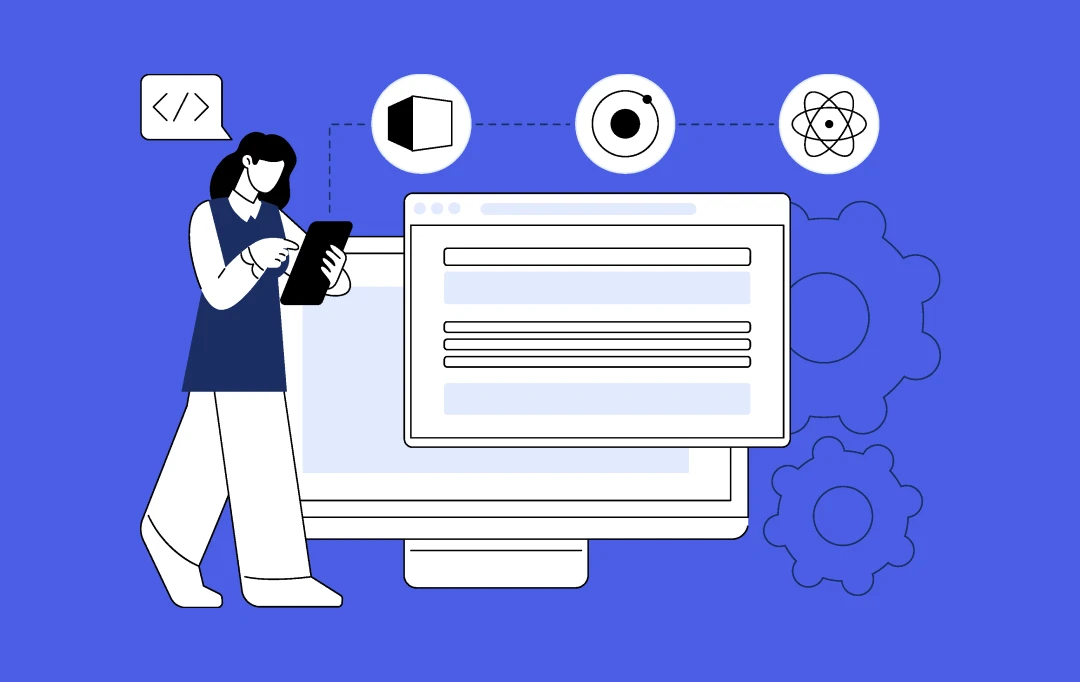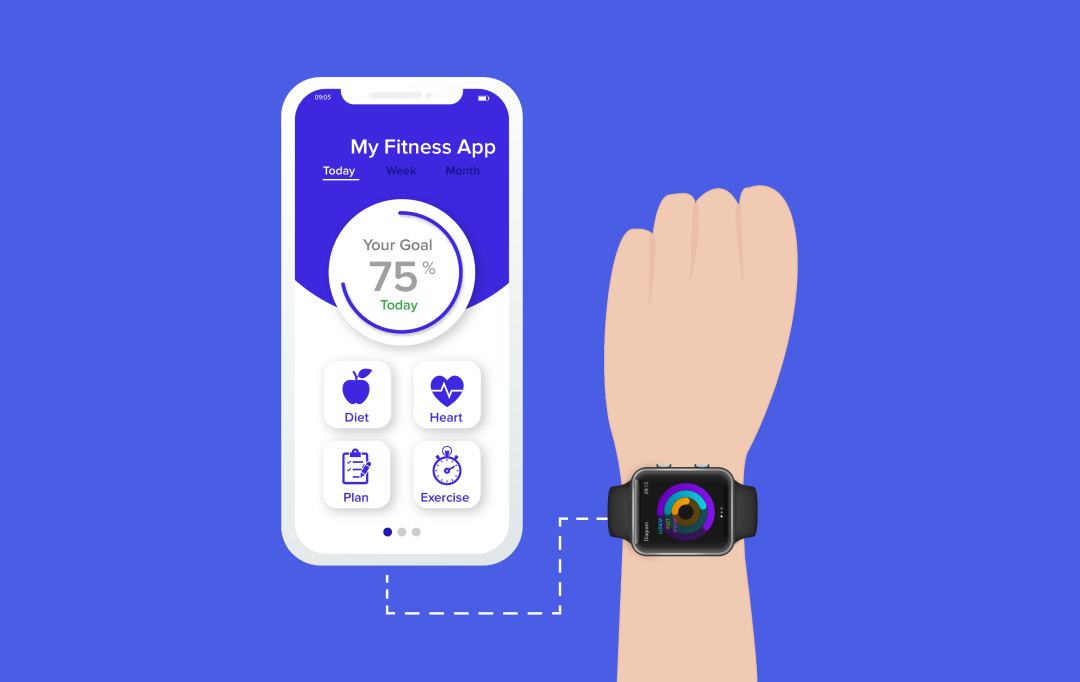- The Transformative Impact of Wearables Integration with mHealth Apps in Healthcare
- Exploring the Different Types of Wearable Technology in Healthcare
- Fitness Trackers
- Smartwatches
- Wearable ECG Monitors
- Continuous Glucose Monitors (CGM)
- Wearable Blood Pressure Monitors
- Smart Clothing
- Wearable Sleep Trackers
- Wearable Temperature Sensors
- Wearable Oxygen Monitors
- Smart Glasses
- How Emerging Technologies Are Powering Wearables in mHealth Apps
- AI and Wearables for Personalized Health
- Blockchain for Data Security and Transparency
- Cloud Computing and Wearables for Real-Time Data Access
- Edge Computing for Faster Data Processing
- Why Wearables Are the Game-Changer for mHealth Apps: Key Benefits Explained
- Improved Patient Monitoring
- Early Detection of Potential Health Issues
- Better Chronic Disease Management
- Enhanced Patient Engagement
- Increased Data Accuracy
- Better Medication Adherence
- Personalized Health Recommendations
- Cost-Effective Healthcare Solutions
- Navigating the Challenges of Wearable Integration in mHealth Apps
- Data Privacy and Security Concerns
- Technical Challenges
- User Adoption and Engagement
- Interoperability with Healthcare Systems
- Experience Seamless Wearable Integration with Appinventiv
- FAQs
Key takeaways:
- Approximately 44% of Americans use wearable health devices, indicating the significant demand for this technology in healthcare, which is driving rapid market growth.
- Wearable devices are transforming chronic disease management by enabling patients to continuously monitor their vital signs while providing doctors with real-time insights that support more accurate and timely treatment decisions.
- When wearable devices work with health apps, they automatically collect data, spot health patterns, and send timely alerts that help patients and make healthcare more efficient.
- Despite these advantages, several significant challenges remain, including ensuring robust data privacy, achieving seamless system integration, promoting user adoption, and maintaining cost-effectiveness.
Sarah’s Apple Watch buzzed at 2:47 AM, detecting an irregular heart rhythm that would have otherwise gone unnoticed. Within minutes, she was on her way to the emergency room, where doctors confirmed atrial fibrillation. This is a condition that could have led to a stroke if left untreated. Sarah’s story isn’t unique. It’s becoming a common example of how wearable technology is quietly saving lives, offering early warnings for serious health issues and enabling timely medical intervention before symptoms even appear.
What started as simple step counters strapped to our wrists has evolved into sophisticated health monitoring systems that are literally saving lives. Today’s wearables aren’t just tracking our morning jogs; they’re becoming our health guardians, seamlessly integrated with mobile health applications that put medical-grade monitoring right at our fingertips.
Wearable devices, when combined with mobile health apps, are doing more than reshaping our approach to staying fit—they’re transforming how we prevent illness and bringing professional-grade health tracking to countless people who never had these options before.
In this blog, we’ll explore the profound impact of wearable technology in healthcare applications, dive into its various types, examine its integration with advanced technologies, highlight its key benefits, and address the challenges surrounding its adoption.
Let’s delve deeper.
Don’t fall behind—invest in wearable tech for better healthcare interoperability.
The Transformative Impact of Wearables Integration with mHealth Apps in Healthcare
One of the most profound shifts driven by wearables and mHealth technology is the move from generalized care to hyper-personalized wellness. This transformation is particularly impactful for managing chronic illnesses or high-risk populations. Instead of standard protocols, patients receive care recommendations that align with their actual behaviors, rhythms, and triggers.
On the other hand, healthcare providers can tap into this information through mHealth apps, allowing them to keep tabs on patients remotely and make more informed clinical decisions with current data. The influence these wearable devices have on healthcare runs deep.
A McKinsey report shows healthcare data will likely expand at a 36% compound annual rate through 2025, which points to how much more we’re depending on data in medical care. When wearables continuously feed information into mHealth apps, these apps can deliver personalized suggestions, send timely reminders, and issue alerts—all of which enhance patients’ engagement and adherence to their treatment routines.
Forbes reported in 2025 that the digital healthcare market jumped from $260.9 billion in 2023 and could reach $1920.9 billion by 2033, showing just how fast demand for these technologies is climbing.

What’s more, wearables excel at data analytics, pushing healthcare toward a more forward-thinking, information-based approach. Sophisticated algorithms sift through the massive amounts of information these devices collect, identifying health patterns, forecasting potential outcomes, and supporting doctors’ decision-making.
Fitness enthusiasts and general users are now increasingly relying on wearables to manage ongoing health conditions and recover after surgery, further demonstrating the importance of these devices in enhancing healthcare delivery. The merger of wearable technology and mHealth apps doesn’t just promise better patient results—it also means more efficient, personalized care, establishing these tools as cornerstone elements in healthcare’s future.
Exploring the Different Types of Wearable Technology in Healthcare
Wearable technology in healthcare is rapidly evolving, offering diverse solutions to monitor, manage, and improve health. From fitness trackers and smartwatches to advanced medical devices like ECG monitors and continuous glucose trackers, these wearables collect valuable health data in real-time. Let’s have a look at those.
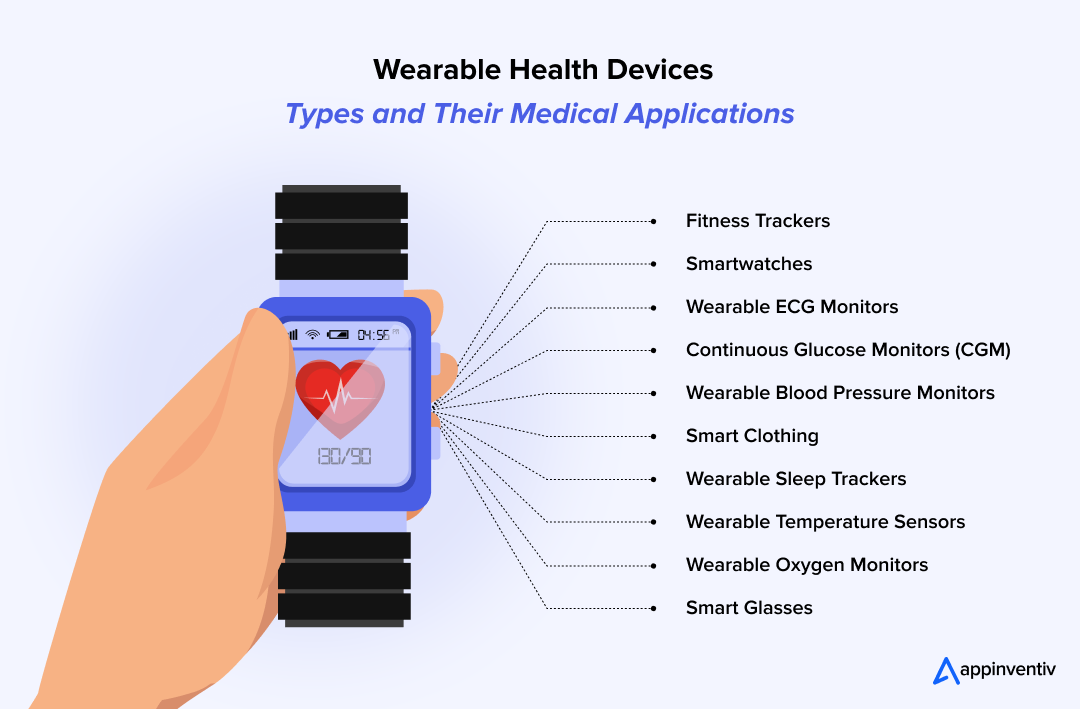
Fitness Trackers
Among the most popular wearable devices in healthcare today, fitness trackers have revolutionized how people approach personal wellness. These devices continuously monitor activity levels, heart rate patterns, and caloric expenditure throughout the day.
Healthcare wearable applications amplify their effectiveness by allowing users to visualize progress trends and receive actionable health insights. The real value lies in how these devices make fitness tracking effortless, encouraging more people to maintain active lifestyles and take ownership of their health decisions.
Smartwatches
Today’s smartwatches have evolved into sophisticated health monitoring platforms that go well beyond counting daily steps. Users can now access heart rate monitoring, electrocardiogram readings, and detailed sleep pattern analysis—all through their wrist-worn device.
The integration with specialized wearable applications has made these devices central to modern medical wearable development. Users particularly appreciate receiving immediate health alerts when their device detects irregularities, which often leads to earlier medical intervention and better health outcomes.
Wearable ECG Monitors
For individuals requiring ongoing cardiac monitoring, dedicated ECG devices have become indispensable health management tools. These monitors work continuously in the background, detecting heart rhythm irregularities and automatically syncing findings with connected healthcare applications.
Users find tremendous peace of mind knowing they’ll receive advance warning about potential cardiac events, allowing them to seek medical attention before minor issues become serious complications.
Continuous Glucose Monitors (CGM)
Diabetic patients have experienced transformative changes in disease management thanks to CGM technology. These devices eliminate the need for frequent finger-stick testing by providing continuous glucose readings throughout the day and night.
Healthcare applications paired with CGMs help users understand glucose patterns and trends, making it much easier to adjust diet, exercise, and medication timing. The result is often dramatically improved blood sugar control and reduced anxiety about dangerous glucose swings.
Wearable Blood Pressure Monitors
Hypertension management has become significantly more convenient with wearable blood pressure monitoring devices. Users can now track their blood pressure continuously without the inconvenience of traditional cuff-based measurements.
Integration with health applications provides comprehensive tracking over time, helping users identify patterns and triggers that affect their blood pressure. Many users report feeling more engaged in their hypertension management and require fewer routine medical appointments.
Smart Clothing
The integration of monitoring technology directly into clothing represents a breakthrough in hands-free health tracking. Users involved in athletic training or rehabilitation programs particularly benefit from this seamless approach to biometric monitoring.
Real-time data automatically flows into specialized mHealth applications, enabling healthcare providers to create more targeted treatment plans. Users appreciate how this technology allows them to focus on their activities without being distracted by separate monitoring devices.
Wearable Sleep Trackers
Sleep quality monitoring has gained significant attention as research continues to highlight the connection between sleep and overall health. These devices analyze sleep cycles, track movement during rest, and monitor breathing patterns throughout the night.
Users often discover surprising insights about their sleep habits and can make informed adjustments to improve their rest quality. Those dealing with conditions like sleep apnea find these devices particularly valuable for tracking treatment effectiveness.
Wearable Temperature Sensors
Continuous body temperature monitoring offers users an early warning system for potential illness or infection. These sensors work quietly in the background, alerting users to temperature changes that might indicate developing health issues.
This technology proved especially valuable during recent health crises, helping users monitor their well-being and make informed decisions about when to seek medical care or avoid exposing others to potential illness.
Wearable Oxygen Monitors
Blood oxygen monitoring has become increasingly important for users managing respiratory conditions or those living at higher altitudes. These devices provide continuous SpO2 readings and can alert users when oxygen levels drop below safe thresholds.
Users with conditions like COPD or asthma find these monitors invaluable for understanding how their condition fluctuates throughout the day and knowing when they need to use rescue medications or seek immediate medical attention.
Smart Glasses
Healthcare professionals are beginning to embrace smart glasses technology that overlays patient information directly into their field of vision during examinations and procedures. This hands-free approach to accessing medical data allows providers to maintain eye contact with patients while still having critical information readily available.
Early adopters report improved efficiency in patient care and better ability to engage with patients during consultations, suggesting this technology will play an increasingly important role in future healthcare delivery.
At Appinventiv, we partnered with Vyrb to develop an AI-powered social media app designed specifically for audio messaging via Bluetooth-enabled wearables. The goal was to create a hands-free, voice-first platform that transforms how users interact, share, and consume content on the go.

From seamless voice integrations to real-time messaging capabilities, our end-to-end development approach helped Vyrb deliver an innovative and intuitive audio experience for its users. The results were incredible, with Vyrb securing over $1M in funding and launching a cutting-edge, voice-first social media platform optimized for Bluetooth wearables, redefining hands-free user engagement.
How Emerging Technologies Are Powering Wearables in mHealth Apps
The integration of various advanced technologies in wearables is revolutionizing healthcare delivery. These wearable technology innovations in healthcare are transforming mHealth apps by going beyond simple activity tracking to deliver advanced features that enhance patient care.

AI and Wearables for Personalized Health
AI has become a crucial piece of medical wearable technology in healthcare. When wearables use AI algorithms to sift through huge amounts of health information, they can offer health advice that’s tailored just for you. These systems examine both your health history and current conditions to identify emerging health trends, such as recognizing patterns in your heart rate, sleep patterns, or physical activity levels.
Wearable technology in healthcare, when connected with AI, can intervene before problems arise, sending you alerts about potential health concerns based on the data’s predictions. For example, AI-based wearables might warn you about potential strokes or heart attacks by analyzing your past health information, providing personalized suggestions that significantly enhance patient engagement and adherence to their treatment plans.
Blockchain for Data Security and Transparency
Blockchain is increasingly being incorporated into wearable technology innovations in healthcare, as it provides secure data storage. Since wearables collect sensitive health information, blockchain creates an immutable, decentralized record system for storing this data. When wearable technology is integrated with secure data transmission, blockchain ensures that the data cannot be tampered with and is accessible only to authorized individuals.
This approach provides patients with better privacy protection and makes it safer to share health data between different healthcare providers, which enhances the collaboration between care teams and facilitates informed decision-making while maintaining transparency.
Also Read: Blockchain Technology in Healthcare: All You Need to Know
Cloud Computing and Wearables for Real-Time Data Access
Cloud computing has become essential for how medical wearable technology in healthcare actually works by letting wearables store and access data instantly. These devices can constantly watch your health markers while uploading information to cloud-based systems. This setup enables healthcare providers to monitor conditions remotely, track health trends, and make informed decisions about patient care.
Through healthcare wearable app development, cloud platforms seamlessly integrate wearables with patient health records, providing doctors with real-time access to critical data from anywhere, which accelerates and enhances clinical decision-making.
Edge Computing for Faster Data Processing
Edge computing is another game-changing technology that’s being built into wearable technology in healthcare. Instead of sending data elsewhere to be processed, edge computing handles the information directly on the wearable device itself, which reduces delays and ensures that important health data is ready when needed.
Take wearables that track your heart rate or blood pressure, for instance—they can crunch the numbers instantly and warn you and your healthcare team about anything unusual without having to wait for cloud processing. This makes everything more responsive and helps the healthcare wearable app function better, especially when being monitored continuously from home or anywhere.
Why Wearables Are the Game-Changer for mHealth Apps: Key Benefits Explained
Wearable devices are transforming the healthcare landscape by integrating seamlessly with mHealth apps to provide continuous, real-time health monitoring. Let’s have a look at the key benefits of integrating wearables during mHealth app development:

Improved Patient Monitoring
Wearables enable continuous, remote patient monitoring, reducing the need for frequent in-person visits to healthcare providers. By tracking key health metrics such as heart rate, blood oxygen levels, and sleep patterns, wearables can send real-time data to mHealth apps, enabling healthcare professionals to monitor their patients’ conditions remotely.
When wearables track vital health information, such as heart rate, blood oxygen levels, and sleep patterns, they can transmit that data instantly to mHealth apps, allowing healthcare professionals to monitor their patients remotely.
This works especially well for people dealing with ongoing health issues like heart disease and diabetes, helping them take care of their health without leaving home. Healthcare wearable app development enables remote access to vital health information, ensuring timely assistance arrives when needed and enhancing the overall patient care experience.
Early Detection of Potential Health Issues
The instant data that wearables gather helps detect health problems before they get serious. For example, wearables can detect irregular heartbeats, sudden blood pressure changes, or breathing difficulties that may signal major health issues, such as heart attacks or strokes.
When AI is merged with wearable technology in healthcare, these devices can analyze data patterns and predict potential risks, enabling doctors to intervene before conditions worsen. This early warning system has a significant impact on patient outcomes and reduces the frequency of emergencies.
Better Chronic Disease Management
Conditions like diabetes, high blood pressure, and asthma need constant attention to make sure they’re under control. Wearable medical technology enables people to track their essential health metrics continuously, providing healthcare professionals with up-to-date information to adjust treatment plans as needed.
Wearables can monitor blood pressure, blood sugar, and oxygen levels, plus other important measurements, helping both patients and doctors stay on top of chronic conditions. Wearable medical technology makes treatment more personalized, resulting in fewer complications and shorter hospital stays.
Enhanced Patient Engagement
Wearables enable patients to take a more active role in their health by providing them with instant feedback and valuable health insights. People learn about their health status, including when to take their medicine, when to rest, and when to get more active. This information helps patients stay engaged with their care, leading to better adherence to treatment plans.
When wearables work in conjunction with healthcare wearable technology and mHealth apps, users become more engaged in their health, encouraging positive lifestyle changes. This increased involvement can lead to better health results, as patients feel more in control and responsible for their wellness.
Increased Data Accuracy
One of the most significant advantages of wearable technology in healthcare is the accuracy and consistency of the data it captures. Unlike self-reported information or occasional readings during clinic visits, wearables provide continuous, real-time monitoring.
This steady stream of precise health metrics helps eliminate the risk of human error and offers a far more reliable and comprehensive view of a person’s overall health status.
Better Medication Adherence
Wearable medical devices that work with mHealth apps help patients stick to their prescribed medication schedules. These devices can remind users when to take their medication, track medication usage, and alert healthcare providers if any doses are missed.
For people with chronic conditions, taking medication as prescribed is crucial, and wearables act as a constant helper in managing their treatment. This improvement in adhering to medication schedules leads to better condition management, fewer complications, and an improved quality of life. Healthcare wearable technology has become incredibly valuable in ensuring patients follow their treatment plans precisely.
Personalized Health Recommendations
Wearables collect vast amounts of health information, which can be analyzed to provide personalized health advice. Using AI and machine learning, these devices can analyze an individual’s behavior, activity levels, and overall health to provide personalized recommendations. Whether it’s tweaking workout routines, suggesting changes to your diet, or recommending ways to relax, wearables make health management more personalized.
Our team at Appinventiv partnered with DiabeticU, a complete diabetes management app that works seamlessly with fitness trackers and smartwatches. The app offers customized meal suggestions, workout plans, medication reminders, and blood sugar tracking all in one place.
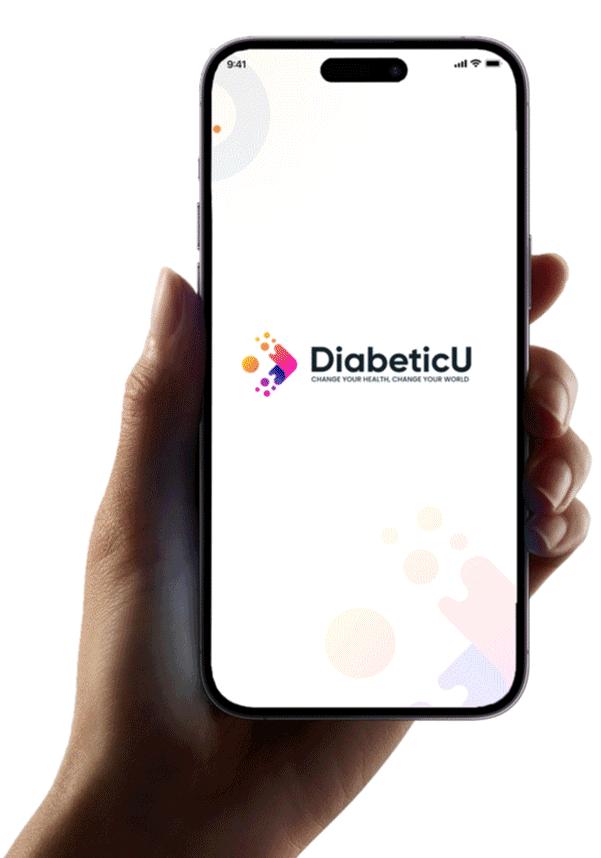
What makes DiabeticU special is how it takes your real-time health data and turns it into personalized recommendations that actually make sense for your lifestyle.
This type of customization can enhance the effectiveness of health interventions and prevent unnecessary treatments. AI and wearable technology in healthcare are enabling patients to receive highly specific and relevant health advice.
Cost-Effective Healthcare Solutions
By reducing the need for regular doctor visits and hospital stays, wearables provide a more cost-effective approach to managing healthcare. Continuous remote monitoring helps identify potential problems early, preventing the need for expensive emergency treatments. Since people can track their health numbers at home, they can skip frequent hospital trips, which lowers overall healthcare costs.
This cost-effectiveness is one of the key driving factors behind the widespread adoption of wearable medical devices and their integration with healthcare systems. The reduced financial burden benefits both patients and healthcare providers by improving care while lowering expenses.
Start your implementation journey with us today!
Navigating the Challenges of Wearable Integration in mHealth Apps
Bringing wearable technology together with mHealth apps presents its own set of challenges, from concerns about data security to ensuring that different devices work seamlessly together. Overcoming these obstacles is crucial to fully leveraging the potential of wearables in healthcare. Let’s take a look at those:
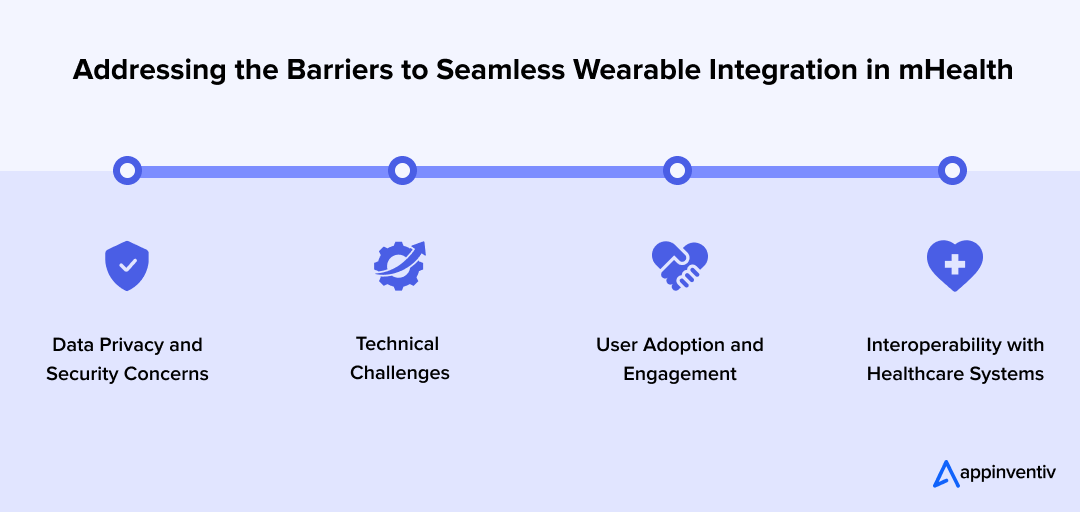
Data Privacy and Security Concerns
Wearables gather sensitive health information, which makes them appealing targets for hackers. Keeping this data safe is absolutely essential for protecting patient privacy.
Solution: Healthcare wearable app development needs to put encryption, secure cloud storage, and following privacy rules like HIPAA at the top of the priority list. Multi-layered security approaches, like two-factor authentication and regular security updates, are crucial for protecting health data. When we strengthen security measures, we can build trust in wearable technology in healthcare and maintain user privacy.
Technical Challenges
Getting wearables to work smoothly with mHealth apps presents technical challenges, especially when ensuring compatibility with various devices and platforms.
Solution: Companies should focus on building wearables solutions that work well with all kinds of devices right out of the box. Thorough compatibility testing, regular updates, and standardized communication methods are necessary to ensure everything integrates smoothly and data syncs reliably.
User Adoption and Engagement
Even with all the benefits, not everyone is jumping on the wearables bandwagon. Some people hold back because they think the devices are too complicated, too expensive, or they’re unsure of the benefits.
Solution: To get more people on board, it’s important to create easy-to-use apps that give clear and helpful health insights. Showing people the long-term benefits of wearables, like preventing disease and managing health better, will encourage them to leverage the benefits of wearable technology in healthcare.
Interoperability with Healthcare Systems
Wearables often struggle to integrate into existing healthcare systems, resulting in fragmented patient data and complicating care management.
Solution: Standardizing data formats and communication protocols, such as HL7 or FHIR, will facilitate the smooth sharing of information between wearables and healthcare systems, thereby improving care coordination and patient outcomes. Integrating wearables with existing infrastructure is crucial for creating a comprehensive view of patient health.
Experience Seamless Wearable Integration with Appinventiv
As more people adopt mHealth wearables, a growing number of healthcare organizations are recognizing the significant potential that wearable technology offers. Technological advancements and increasing life expectancy are prompting insurance companies to reassess their policies to accommodate the growing adoption of wearable devices. These devices are expected to reduce hospital visits and provide immediate, significant, on-demand primary care, ultimately lowering overall healthcare costs for individuals.
Looking ahead to the future of wearable technology in healthcare, the possibilities are endless. As automation continues to grow, more healthcare institutions are likely to start using wearable devices to enhance patient care and improve healthcare delivery. When wearables work in conjunction with healthcare apps, they create a seamless, proactive way to manage health, which alleviates some pressure from traditional healthcare systems.
With years of experience in wearable devices app development company, Appinventiv is ready to lead this change by providing innovative, user-focused solutions. Our expertise in integrating innovative wearable technology into healthcare apps means we’re not just keeping up with trends, but actually shaping how healthcare delivery will work in the future.
We’re a well-respected healthcare app development company that’s leading this revolution. By embracing the newest technologies, we’ve established ourselves as leaders in the mobility space, delivering quality solutions when they’re needed most.
If you’re looking to develop innovative healthcare solutions, reach out to us today – we’re excited to help you take the next step in advancing your healthcare offerings.
FAQs
Q. How does wearable technology improve health?
A. Wearable technology makes health outcomes better by constantly monitoring vital signs, physical activity, sleep patterns, and other health measurements. This real-time data gathering provides a comprehensive view of someone’s health that is not possible with occasional doctor visits, helping to detect issues such as irregular heartbeats, changes in activity, or unusual sleep patterns before they develop into serious health problems.
For managing chronic diseases, wearables enhance treatment plans by providing steady monitoring data that helps healthcare providers make informed decisions about medication adjustments and lifestyle recommendations.
Additionally, using wearable technology in healthcare encourages positive behavioral changes through objective feedback, making users more aware of their daily habits and enabling them to make informed health decisions based on data that improves adherence to exercise routines, sleep habits, and medication as prescribed.
Q. What are some of the top examples of wearable technology in healthcare?
A. Some of the leading wearable technology in healthcare examples include:
- Smartwatches – Apple Watch Series with FDA-approved ECG monitoring
- Fitness Trackers – Fitbit devices for activity and sleep tracking
- Continuous Glucose Monitors (CGMs) – Dexcom G6 and Abbott FreeStyle Libre
- Smart Rings – Oura Ring for discreet health monitoring
- Medical-grade Wearable Patches – Hospital-based remote patient surveillance devices.
Q. How does AI and wearable technology in healthcare work?
A. AI and wearable technology in healthcare work through the following process:
Data Collection and Analysis: Sophisticated algorithms process vast amounts of physiological data collected by sensors to identify meaningful health insights that manual analysis cannot detect.
Baseline Establishment: Machine learning algorithms analyze historical data to establish individual baseline patterns for each user, accounting for personal variations in normal physiological responses.
Continuous Monitoring and Comparison: AI continuously compares current readings against personalized baselines to detect anomalies or concerning trends, reducing false positives.
Predictive Analytics: AI models identify subtle pattern changes that precede illness onset, enabling preventive interventions by detecting potential health risks days before symptoms appear.
Data Integration: Natural language processing combines wearable data with electronic health records and user-reported symptoms to provide healthcare providers with a comprehensive patient health status.
Personalized Recommendations: Based on individual health goals and medical history, the system delivers tailored advice for activity levels, sleep optimization, and health maintenance strategies.
Q. What are the benefits of wearable technology in healthcare?
A. The key benefits of wearable technology in healthcare include:
- Proactive Healthcare Management – Early detection and prevention of health issues
- Improved Chronic Disease Management – Better control for diabetes, cardiovascular, and respiratory conditions
- Enhanced Clinical Decision-Making – Comprehensive patient data beyond clinical visits
- Increased Patient Engagement – Greater insight into health patterns and active participation
- Advanced Population Health Research – Large-scale data collection for medical research
- Cost Reduction – Reduced emergency treatments and hospitalizations
- Remote Monitoring Capabilities – Decreased routine clinical visits while maintaining care quality.


- In just 2 mins you will get a response
- Your idea is 100% protected by our Non Disclosure Agreement.

How Much Does Healthcare Software Development Cost in the Middle East? 2026 Cost Guide
Key takeaways: Healthcare software costs in the Middle East range widely because compliance, integrations, and scale matter more than features alone. Enterprise healthcare platforms cost more upfront but reduce long-term risk by replacing fragmented legacy systems. Regulatory alignment and data residency decisions shape architecture and budget from day one. Phased delivery and MVP-led rollouts help…

Identity and Access Management in Healthcare: Core Components, Challenges, and Best Practices
Key Takeaways Healthcare runs on trust, and Identity and Access Management is what keeps that trust intact by protecting every login, record, and device. A modern IAM system does more than secure passwords, it connects people, systems, and data safely across hospitals and clinics. AI and automation are changing how IAM works, spotting risks faster…
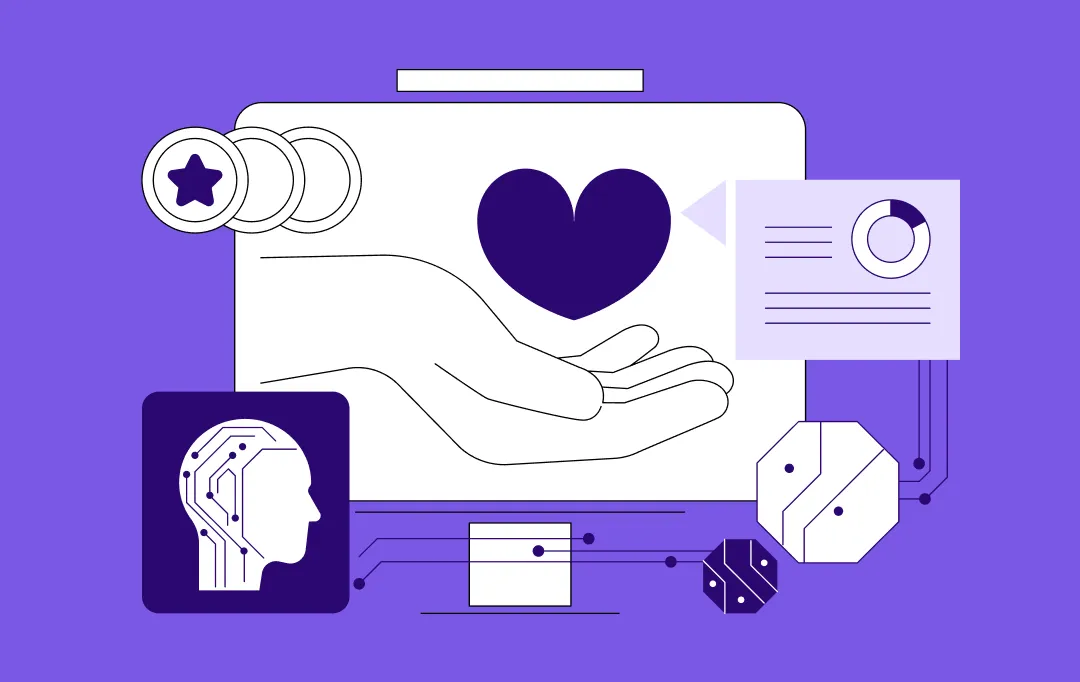
How Telemedicine is Breaking Barriers in Mental Health Care Access and Delivery
Key Takeaways Telemedicine is helping healthcare systems close gaps caused by clinician shortages, long wait times, and limited physical infrastructure. Virtual mental health care boosts access beyond geographical barriers while reducing no-shows, travel barriers, and scheduling conflicts. Hybrid models, remote monitoring, and AI-supported assessments make care more continuous, proactive, and scalable. Partner with Appinventiv to…








